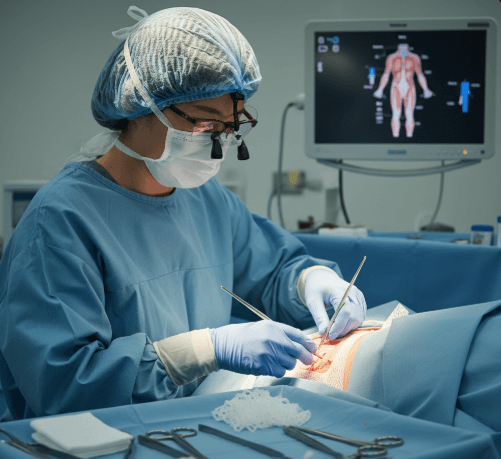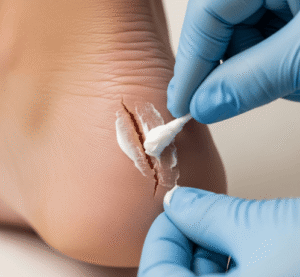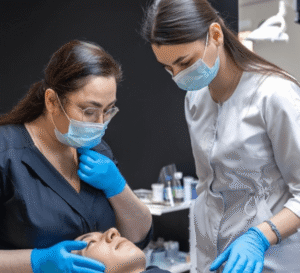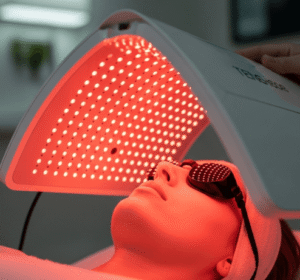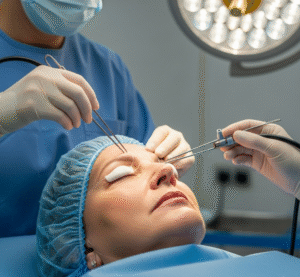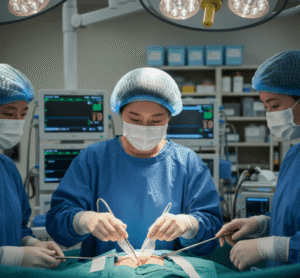What it is
Pelvic organ prolapse repair is a surgical or non-surgical treatment to restore the normal position of pelvic organs—such as the bladder, uterus, rectum, or small intestine—when they drop from their usual place and press against the vaginal wall. This occurs when the pelvic floor muscles and connective tissues weaken due to childbirth, aging, or surgery.
In Korea, pelvic organ prolapse repair is carried out in specialized women’s health and urology centers, using advanced surgical techniques like vaginal, laparoscopic, or robotic-assisted procedures. Non-surgical treatments such as pessaries and pelvic floor therapy are also widely available.
➡️ Types of prolapse:
- Cystocele: Bladder bulging into the vagina
- Rectocele: Rectum bulging into the vagina
- Uterine prolapse: Uterus descending into the vaginal canal
- Enterocele: Small intestine pushing into the vaginal space
Why it’s done
Pelvic organ prolapse is not life-threatening but can severely affect comfort, daily activities, and sexual health.
✔️ Medical reasons for repair include:
- Pelvic pressure or bulge sensation in the vagina
- Urinary incontinence or difficulty emptying the bladder
- Bowel problems such as constipation or incomplete evacuation
- Painful intercourse or reduced sexual function
- Recurrent urinary tract infections due to incomplete bladder emptying
✔️ Benefits of prolapse repair:
- Restores normal anatomy and pelvic support
- Relieves pressure, pain, and urinary symptoms
- Improves sexual health and quality of life
- Prevents worsening of prolapse and further complications
Alternatives
Treatment depends on severity, symptoms, and patient preference.
🔹 Lifestyle and conservative management:
- Weight management, avoiding heavy lifting, and treating chronic cough
- Helps slow progression but does not reverse prolapse
🔹 Pelvic floor therapy:
- Kegel exercises, biofeedback, and electrical stimulation to strengthen support muscles
- Useful for mild prolapse or as supportive therapy after surgery
🔹 Pessaries:
- Vaginal devices that provide structural support to pelvic organs
- Non-surgical option for women not ready for or unable to undergo surgery
🔹 Watchful waiting:
- Mild cases without symptoms may only need monitoring
Preparation
Preparation ensures the best outcomes for prolapse repair.
➡️ Medical preparation:
- Pelvic exam and imaging (ultrasound or MRI) to assess severity and type of prolapse
- Urodynamic testing if urinary incontinence is present
- Blood tests and general health evaluation for anesthesia readiness
➡️ Personal preparation:
- Stopping certain medications like blood thinners if advised
- Fasting before surgery when general anesthesia is required
- Arranging help at home for the initial recovery period
➡️ Mental preparation:
- Understanding that different repair methods exist, and the choice depends on condition and fertility goals
- Counseling about realistic outcomes and possible need for future surgery if prolapse recurs
- Emotional support to cope with body image and sexual health concerns
How it’s done
Pelvic organ prolapse repair in Korea is highly advanced, with several surgical approaches available.
✔️ Step 1 – Anesthesia
- Regional (spinal) or general anesthesia administered depending on procedure
✔️ Step 2 – Access and repair
- Vaginal repair (colporrhaphy): Vaginal wall tightened and reinforced with stitches or mesh
- Hysterectomy (if uterus prolapsed): Uterus removed, with vaginal vault supported
- Sacrocolpopexy: Laparoscopic or robotic procedure attaching the vagina to sacrum with mesh for long-term support
- Native tissue repair: Uses the patient’s own tissues for reinforcement instead of mesh
✔️ Step 3 – Supporting structures
- Mesh or biological grafts may be used for additional strength
- Tissues sutured to restore normal pelvic anatomy
✔️ Step 4 – Completion
- Incisions closed with sutures
- Bladder and bowel function checked before surgery is completed
✔️ Duration:
- Surgery typically takes 1–3 hours depending on complexity
- Hospital stay: 1–3 days for minimally invasive, longer for open approaches
Recovery
Recovery after prolapse repair varies but is generally faster with minimally invasive methods.
➡️ Immediate recovery:
- Vaginal soreness, light bleeding, or pelvic pressure
- Bladder catheter may remain temporarily after surgery
- Hospital monitoring for bleeding or infection
➡️ Physical recovery:
- Return to light activity in 2–3 weeks for laparoscopic/robotic surgery
- 6–8 weeks for open or complex repairs
- Avoiding heavy lifting, strenuous exercise, and sexual activity until cleared by the doctor
➡️ Emotional recovery:
- Relief from bulge sensation and urinary symptoms
- Counseling may be needed if hysterectomy is performed
- Sexual function often improves but requires reassurance and gradual return
➡️ Key recommendations:
- Adequate rest, hydration, and a fiber-rich diet to prevent constipation
- Pelvic floor exercises after recovery to prevent recurrence
- Attending all follow-up appointments for healing checks
Treatment option in Korea
Korea is a leading country for pelvic organ prolapse treatment, offering advanced techniques and patient-focused care.
✔️ Hospital facilities:
- Equipped with robotic-assisted surgical systems for precision
- Specialized urogynecology centers focusing on prolapse and incontinence
- Access to minimally invasive and mesh-free repair options
✔️ Medical expertise:
- Surgeons highly skilled in both traditional and advanced laparoscopic/robotic prolapse repair
- High success rates with low complication risks
- Personalized treatment based on severity, age, and reproductive plans
✔️ Postoperative care:
- Integration of pelvic floor therapy into rehabilitation
- Counseling for sexual health and emotional well-being
- Long-term monitoring to prevent recurrence
✔️ Cultural aspect:
- Korean women’s health programs emphasize privacy, dignity, and holistic recovery
- Post-surgery, many women access Sanhujoriwon-style centers for nutrition, rest, and guided recovery
➡️ Highlight: Pelvic organ prolapse repair in Korea provides state-of-the-art surgical solutions, fertility-conscious approaches, and holistic recovery support, ensuring women regain comfort, confidence, and quality of life.

